
Jeanine Pfeiffer is devoted to the celebration and conservation of biocultural diversity: the intrinsic connections between nature and culture. An ethnoecologist with over 30 years’ experience in Asia, Africa, and the Americas, Dr. Pfeiffer is a senior lecturer at San José State University and a scientific advisor to government, tribal, non-profit and community-based organization. Chapters from her book-in-progress, ‘The Language of Endangered Hearts’, have been nominated for the Pushcart Prize, anthologized, and published in the Bellevue Literary Review, Hippocampus, The Guardian, High Country News, Camas, The Citron Review, The Portland Review, Flyway, Between the Lines, Langscape, Medium, Inverted Syntax, Silver Needle Press, Sky Island Journal, The Lowestoft Chronicles and Nowhere. Her poetry has been featured on Dan Robert’s radio show, Rhythm Running River, on Mendocino County Public Broadcasting station KZYX&Z. More at www.jeaninepfeiffer.com
Of Fur Not Fowl
(Or, How Not to Catch a Tiger)
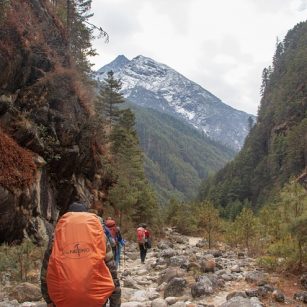
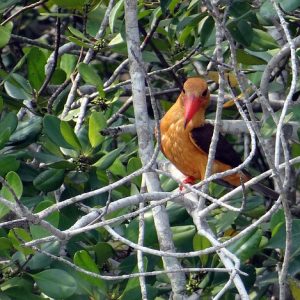
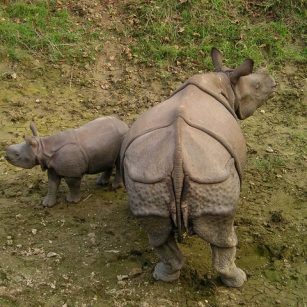
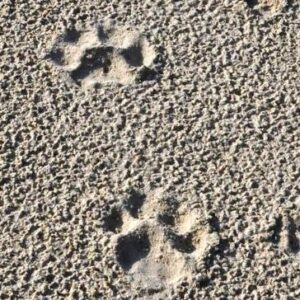

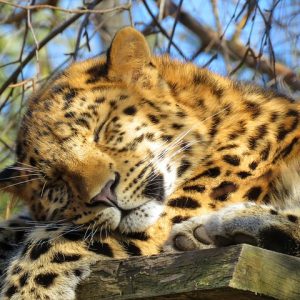

Field Methodology:
- Schedule a bird walk in Bardia National Park, home to the second-highest density of Panthera tigris (Bengal tiger) in Nepal [i].
- Arise late. Neglect to drink coffee before departing.
- Greet the guides waiting outside the lodge: one binocular-wielding-bird-enthusiast younger brother, one bamboo-pole-wielding-tiger-enthusiast elder brother.
- Set off as a threesome on a brisk hike into the forest.
- Minutes later, immersed in somnambulant greenery, appreciate each watery splash and cracked twig penetrating overly-sensitized eardrums.
- Train one’s binoculars on a riverside kingfisher, veiled by early morning fog.
- Lured by the placid setting, think, “this is exactly why I wanted to come on a bird walk!”
- Jolt into wakefulness by sudden shriek-barking.
8a. Register short, sharp cries increasing in intensity, followed by the shrrwwsh-shrwwshhh-shrswwshh-shrsswwhhing of terrified ungulates slamming through the underbrush.
8b. Note when all the sounds stop.
- Pause.
- Re-focus on the kingfisher, tracing its wingtips and beak through the gauzy mist.
- Extend one’s nerdness and idiocy long enough to lose both guides.
- Awaken a third time.
- Execute a trembling, 360-degree turn, taking in the ominous crunch of lone sneakers on an empty path.
- Calculate one’s probability of becoming prey while standing still vs. becoming prey while running after the brother-guides.
14a. Compare, in the fuzzy recesses of one’s mind, the known density of tigers per square kilometer with the expected density of multiple feline species in the immediate vicinity.
14b. Multiply zero data by zero choice. Lose precious seconds weighing non-options.
14c. Self-bifurcate: one half laughing at the absurdity; the other half deeply anxious.
14d. Allow the anxious half to win. Hot foot it out of there.
- Follow, at a quick trot, skid marks made across the soft sand forest floor.
15a. Midstride, congratulate oneself on successfully tracking a deer-dragging kitty.
15b. Microseconds later, drop the pretentiousness: what the hell lies at the other end?
- Halt abruptly when the tracks terminate at a massive thicket of brambles.
16a. Behold body-sized openings yawning randomly around the thicket’s base.
16b. Observe one’s guides pacing intently around the thicket.
16c. Recall that felines are known to store prey in arboreal settings.
- Absorb the brothers’ conclusion: kitty is an Asian leopard, Panthera pardus fusca, 40-60 kilograms of highly strung, carnivorous muscle, as opposed to Panthera tigris, 200-300 kilograms of highly strung, carnivorous, [hu]man-eating muscle.
- Thank the Nepali deity Durga[ii] for a bloodless reunion (thus far).
- Abandon relief when snarled warnings vibrate through the bramble. Leopards stash their kill in trees, a sort of elevated snack shack. We could become that snack.
- Estimate new probabilities: the odds of a hungry, pissed-off leopard choosing offensive tactics vs. the odds of a hungry, pissed-off leopard choosing defensive maneuvers.
- Attempt a feeble joke. (“Um, uh, can’t we let kitty finish her breakfast?”)
- Retain one’s composure even as the brother-guides continue circling the bramble, muttering goddess-knows-what to each other and randomly thicket-thwacking.
- Experiment with alternate phrasing. Postulate, “I always heard it was a really bad idea to bother cats while they ate.”
- Acknowledge the brothers’ complete lack of a response.
- Contemplate food chain dynamics. Recognize the banality (and vulnerability) of an herbivore – such as one’s vegetarian self – in the presence of an omnivore.
- Wake the *bleep* up! Transform into an imperious vegetarian. Yank bird-enthusiast brother away from the thicket.
- Stride rapidly back to civilization. Attempt to confirm predator-free zones by swiveling one’s head in manic 180-degree arcs.
- Return to the lodge, intact. Hand over thousands of rupees. Bid younger brother adieu.
- Resolve that any and all future Nepali bird-watching tours shall occur on the backsides of 2000-kilogram pachyderms (Elephas maximus indicus), whose tiger-bashing reputations preclude the cornering, teasing, agitating, vexing, or harassing of Panthera
- #RespectTheDamnKitties
[i] According to the Nepali Department of National Parks and Wildlife Conservation of the Ministry of Forests and Soil Conservation 2014 Report, Status of Tigers and Prey in Nepal, Bardia National Park contains an estimated average tiger density of 3.33 individuals per 100 square kilometers; a figure only succeeded by Chitwan National Park with an estimated average density of 3.84 individuals/100 km2.
[ii] A fierce, demon-fighting deity manifesting fearlessness and patience, Durga never loses her sense of humor.
Jeanine Pfeiffer